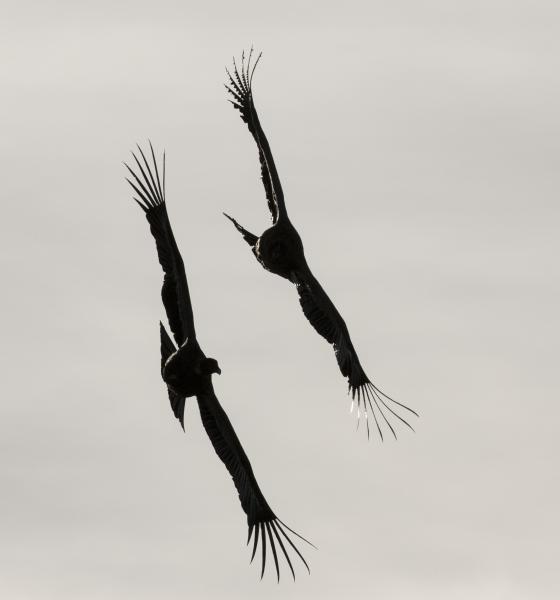That was the question posed by researchers who sought an answer by attaching an avian version of a “black-box recorder” or Apple Watch to several young condors in Argentina. Soaring requires updrafts of air. In the mountainous regions that are the home of the Condors, these updrafts come from thermals, as hot air rises or from winds hitting slopes and being deflected upwards. The latter is an orographic effect, a change caused by the topology of an area. As you might imagine, the mountainous regions are a diverse, complex mix of the two, with the orographic effects more stably located than the thermals.
The results reflect 235 hours of flight recordings of eight condors who averaged a little over 3 hours of flight daily, covering roughly 17 kilometers within their neighborhood. In one instance, a condor was able to travel 172 kilometers in about 5 hours. What they found was that during these intervals, the condors were flapping their wings, sprinting along, about 1% of the time – the rest of the time, energetically speaking, was little different than being at rest. The flapping time involved the take-off as well as time spent moving from one source of the updraft to another.
The effort expending was increased by lower altitudes, headwinds, and weight; more energy was necessary to get a condor up in the air after they had just finished feeding than after a “period of rest.” Given that the condor is the largest of the soaring birds and that the seasonal effects involved “maximal thermal convection and strong winds,” the results are not so much typical as representing the lowest effort possible.
The researchers conclude that take-offs, which required about 3.3 minutes of flapping, used about the same amount of energy as 50 minutes of soaring. Since lower altitudes increase the strength necessary to gain height and catch an updraft, where and how frequently condors perch is a crucial factor in their use of energy. It suggests that “condors should be very selective about where they land.”
The mid-flight flapping, constituting only 30% of the total “flap-time,” was spent in moving from a weak thermal to a stronger thermal or orographic updraft. In these instances, there was less flapping associated with greater height, as the height allowed for a more extended period of search time for a new updraft.
For the researchers, these evolutionary adaptations can explain how extinct birds weighing 5 or 6 times more than the largest soaring birds now alive could have flown through their world. For us, it is just another example of all the little variables that go into making for our niche in this world.
Source: Physical Limitations of Flight Performance in the Heaviest Soaring Bird PNAS DOI:10.1073/pnas.1907360117




